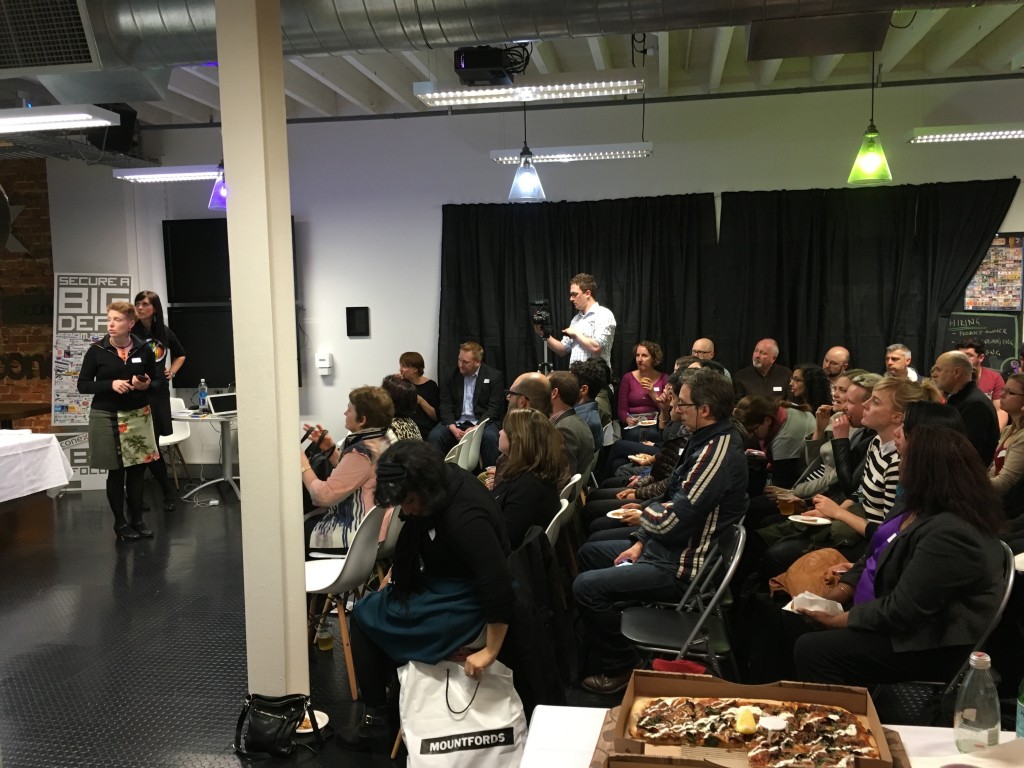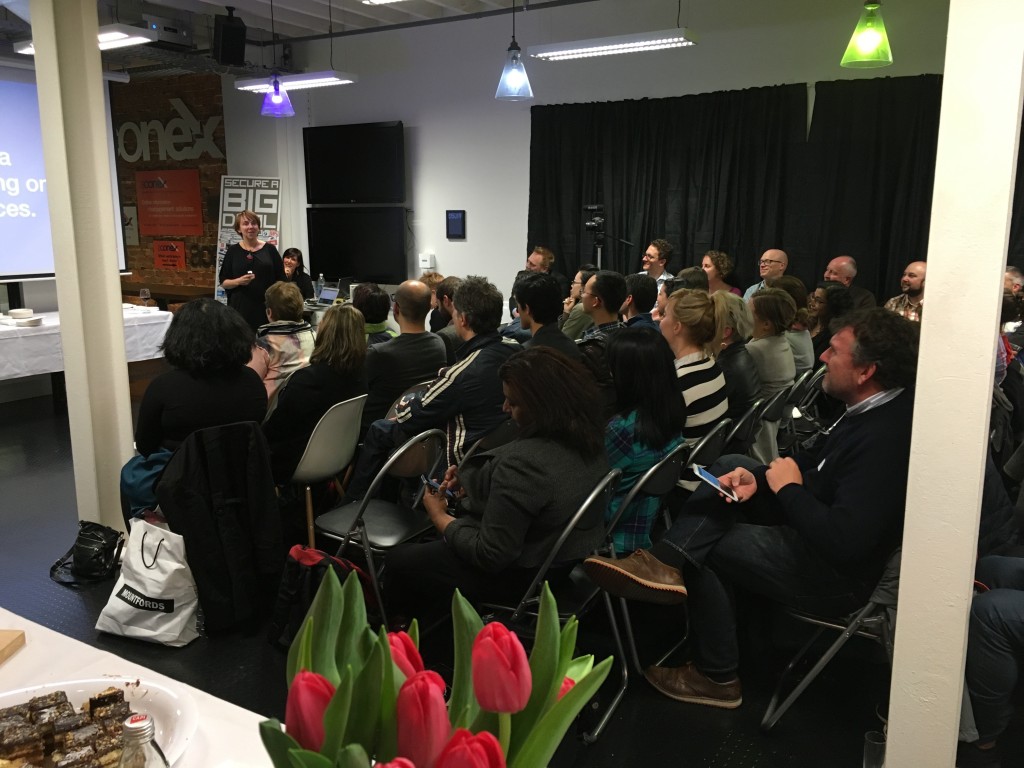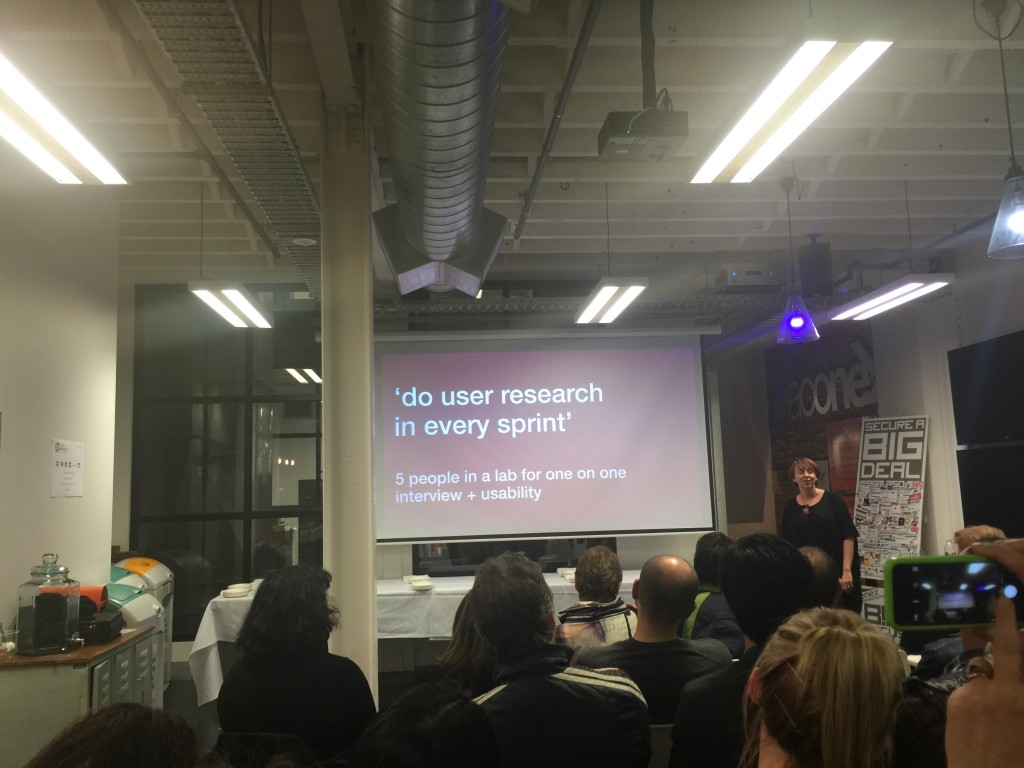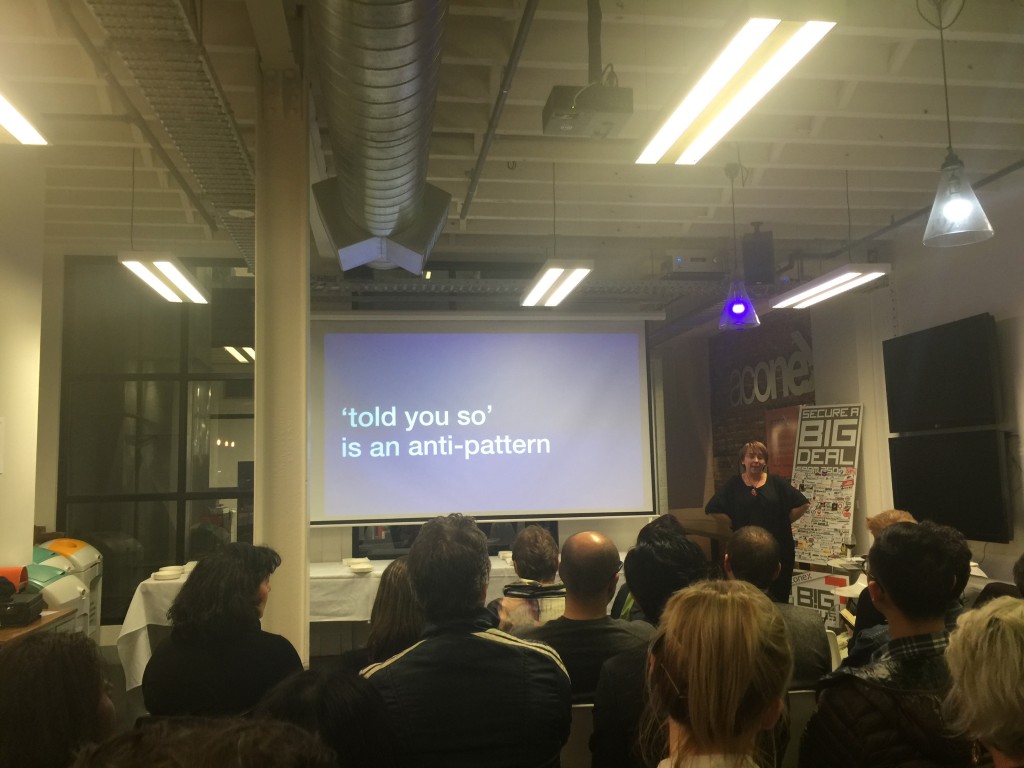Our October event was all about transforming and optimising experiences for our users. – and both talks also included a healthy dose of tips for communicating value and change to your organisations.
We had two great speakers to delve into this topic – Kirsten Mann, Director for Global Design & Experience at Aconex and Leisa Reichelt, Head of Service Design and User Research at the Digital Transformation Office. Leisa brought quite a lot of insight having spent a number of years with the UK Government at the Government Digital Service (GOV.UK) and is now here to help the Australian government similarly improve their sites.
Kirsten started the evening telling us how Aconex brought down business costs by building a great support site.
It all started with the data – 4000 abandoned calls each month! The UX team thought this would be an easy thing to fix which could show measurable ROI – not always an easy relationship to draw. Aconex spends a lot of time & money on face-to-face training and travel so the UX team developed a vision statement to get rid of the cost heavy training approach …if they could provide a end-to-end online support system.
The team tried different ideas & prototypes – including some with aussie humour which didn’t translate across all cultures. 😉 After trial & error they came up with a new version of the support & training site. They saw a reduced cost as the need for F2F training was dramatically reduced.
The Aconex UX team had a great win by showing the organisation it could have real ROI impact. Being able to show this & have a win like this early will smooth the road for future plans – and save costs.
Part of the UX success at Aconex goes back to where UX fits into the organisational structure. Kirsten used a great metaphor of the 3 legged chair – you lose a leg and things will fall over! These legs consist of product management, tech and UX.
Our other special guest for the evening, Leisa Reichelt, has recently returned to Australia after a long time in the UK working at Government Digital Service (GOV.UK). Her focus is to transform public services with user centred service design. Why? Because in any 4 week period more than 1 in 8 Aussies, over 14, will use a government website. And 55% hit problems completing what they came to do.
[pullquote]I’m trying to stop people from crying[/pullquote]
Leisa took us though 4 learnings for user design at a gov’t organisation but the 4 are great for product managers as well.
- show don’t tell
- ask for less, simplify
- change the language
- plan to do more comms
show don’t tell
The show don’t tell principle is rather brilliant. In the product design world we talk ad nauseam about prototypes but what Leisa kindly reminded us about is the meetings we have telling people stuff are such a waste of time. We could be showing them something and having a discussion about what’s next instead of throwing out the “we’ve done that before” types of blockers.
Ask for less and simplify
This is a clever organisational navigation tip. We often despair when we cannot get the 1M we need for the whole project or the 3 resources we absolutely need to do all the projects. That’s when we give up and get nothing.
Why not ask for (& receive!) 20K, do something and then ask for more?!? Ask for 1 resource (or half a one) & use them brilliantly. Once you have something to show as a result of that resource, THEN ask for more.
Put a number in the request – don’t ask for lots of people or money as again this tends to leads to a no answer.
The approach of being specific with a figure led to some very clear guidelines on ensuring your purpose states what you are doing with measurable details. so you can show you are doing, but also so it is very clear how to get started!, how to keep going and prove you have used the resources you asked for.
[pullquote]Language is the medium through which culture is enacted – Gill Ereaut[/pullquote]
Change the language
This was an indulgently awesome moment as it is something I have been talking about at my companies for awhile now and appreciated Leisa being so forthright on the subject…
Any product manager will recognise this situation: that annoying moment when the nickname for a product suddenly becomes the language of the company & when you finally “announce” the real product name it is too late since it will forever be known as the nickname. < SIGH >
Leisa’s point is that language permeates even deeper than that. Her examples touched on the difference between calling yourself UX or UCD & then further on trying to put a nice interface over really terrible policy. If you want to get a different outcome you need to change the language.
Plan to do more comms
One cannot forget the need to communicate, communicate, communicate. When you think you said it enough, say it again!
You are not finished communicating until you are being told the story back to you as if it is fact. Make sure your message is clear (is it clear YET?) 🙂
She closed out the section stating that there isn’t any point doing the work if you aren’t going to share it.
So much wisdom from both these ladies on this wonderful night!!
Thanks to Aconex for their once again fantabulous hosting. A special thanks to Kirsten for pulling it all together! And awesome coordination/promotion with UX Melbourne and the UX Design Group of Melbourne! Let’s do it again guys!
Our last event for the year is on the 26th of November so please join us to reflect on the year that was, share ideas for next year and just mingle and network. No formal talks this session, just conversation, and a drink to wish Product Anonymous happy 5th birthday.




